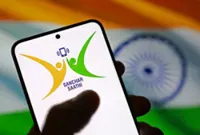Of all gadgets, people have a tendency to hang on to old mobile phones. However, recycling them is vital to recovering increasingly scarce metals. — 123rf.com
As you make plans for spring cleaning this Chinese New Year, consider adding recycling old mobile phones to the list, as you are likely to have more than one unused device lying around the house.
In a report, the international Waste from Electrical and Electronic Equipment (WEEE) forum found that more people are likely to keep old mobile phones than recycle them, preventing precious minerals from being harvested.
Already a subscriber? Log in
Save 30% OFF The Star Digital Access
Cancel anytime. Ad-free. Unlimited access with perks.





